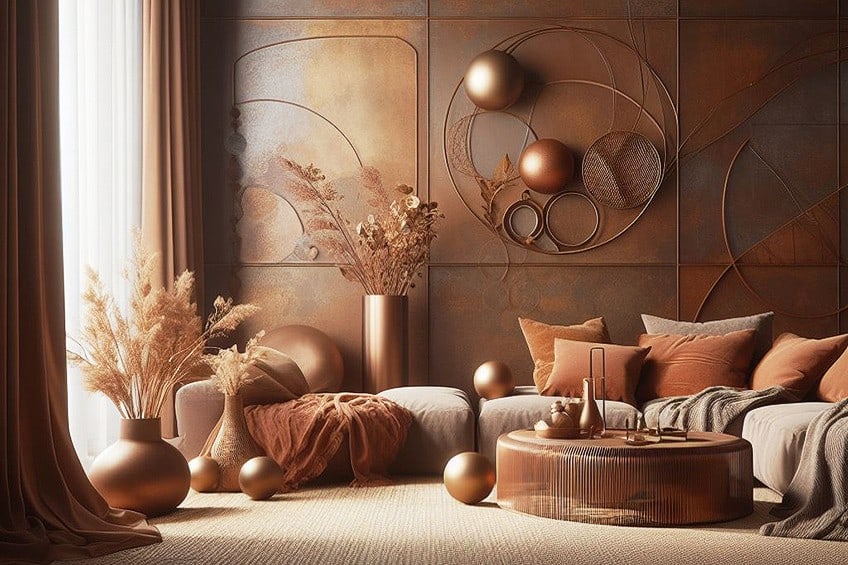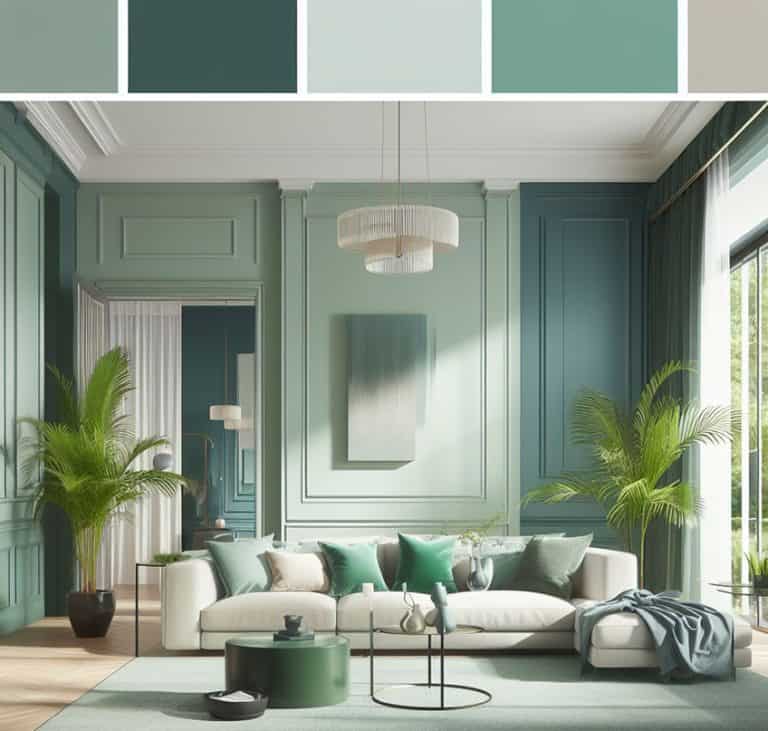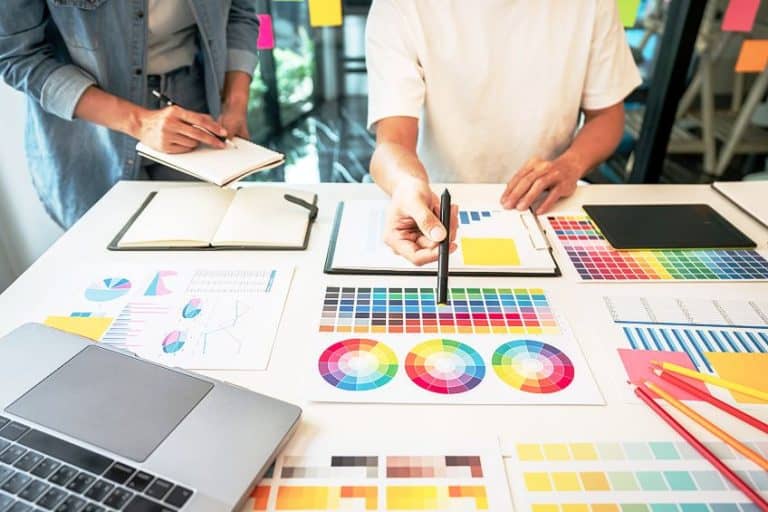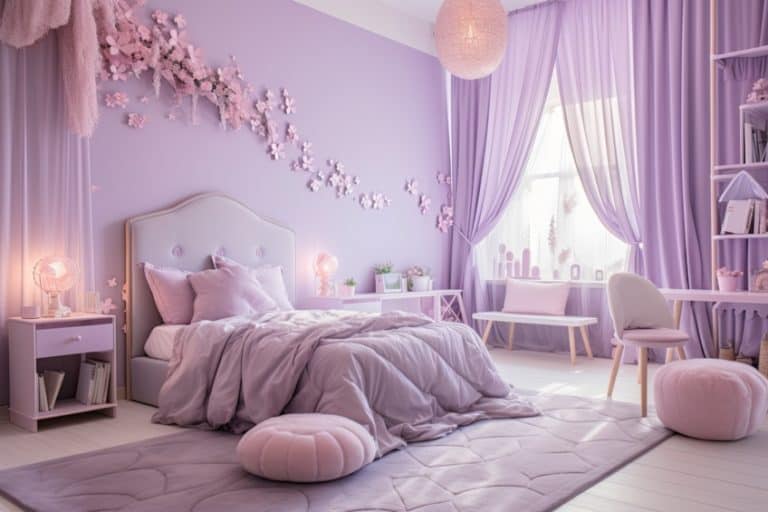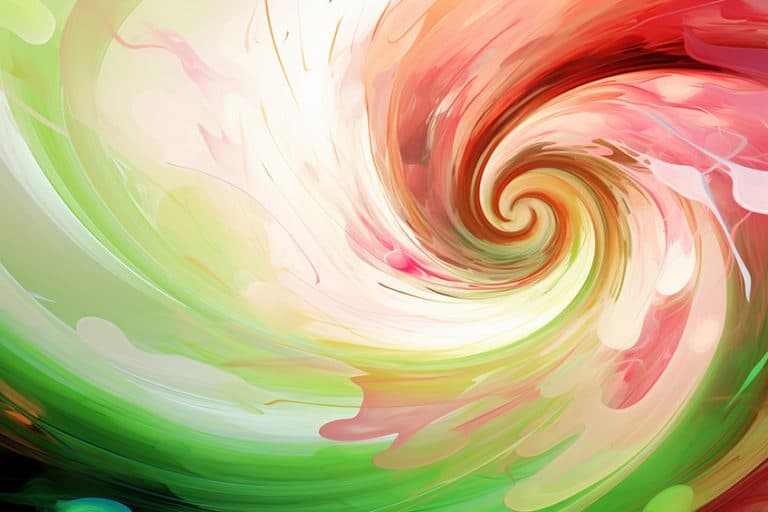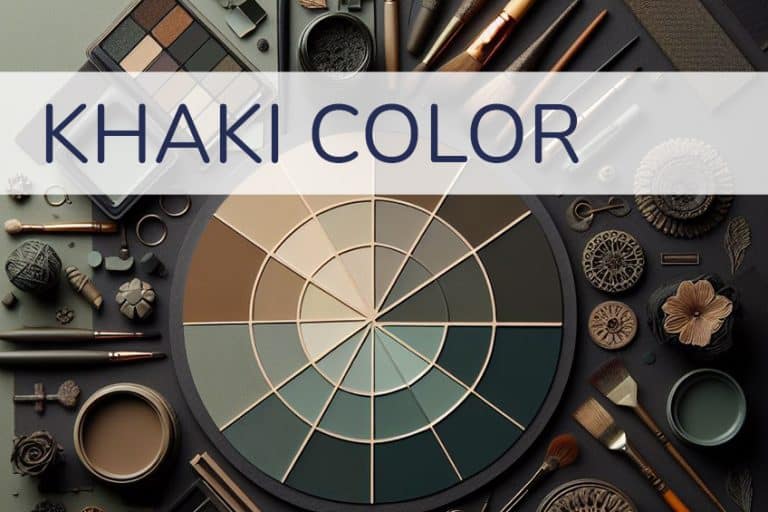Rust Color – The Earthy Palette Used for Interior Decor
A rusting piece of metal can be hazardous to your health and may have some unpleasant associations for many. So, it may come as a surprise that the rust color is a popular fashion and interior design choice. To find out why this is the case and to learn more about this unusual color, we will be delving into things like what colors go with rust and how you can use the color around your home. Let’s get started!
What Is a Rust Color?
Since the color represents iron oxide, which is also known as rust, it can be described as being a shade of red-brown or orange-brown. Some variations can include reddish-yellow undertones. The rust color name that you can find online has a unique identifying hex code and can be described as a strong orange color.
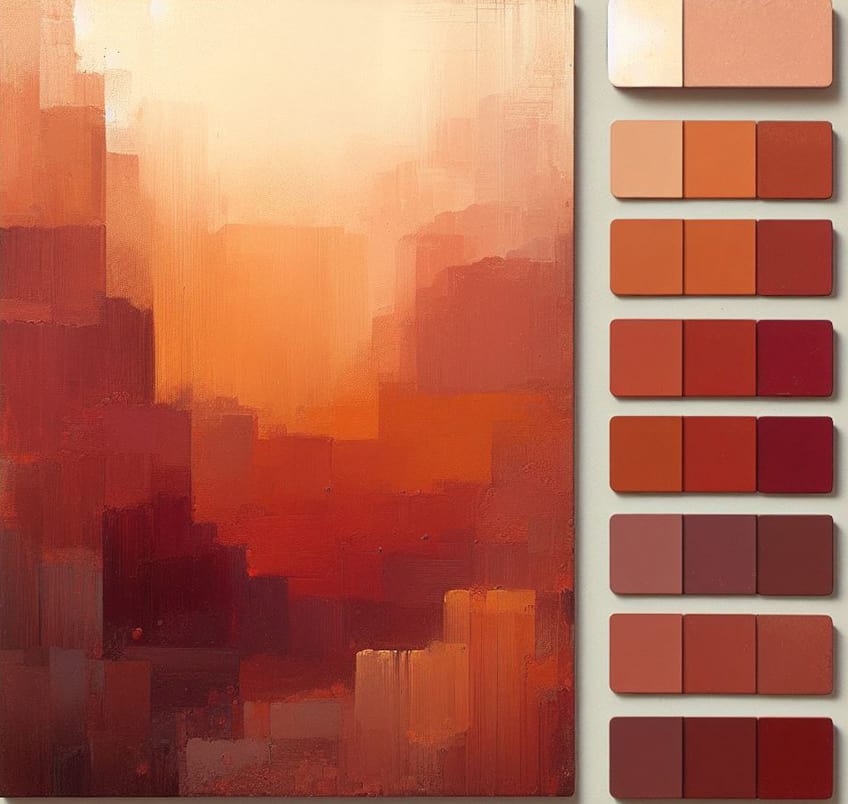
| Shade | Hex Code | CMYK Color Code (%) | RGB Color Code | Color |
| Rust | #b7410e | 0, 64, 92, 28 | 183, 65, 14 |
Rust Color: A Brief History
Rust is the result of the oxidation of iron. The word “rust” itself comes from a Proto-Germanic term “rusta”, which means “redness”. The rust color was first used and recorded in 1692 according to the Dictionary of Color (1930), which was authored by A. Maerz and M.R. Paul.
The rust color also has a role to play in theater lighting, as the warm glow closely resembles photographic safelights and can help to set the mood onstage. Rust has also been regarded as a retro color, especially in the 1970s, when earth tones dominated home interiors.
Today, the rust color has gained in popularity again, due to its warm, earthy, and rustic appeal.
Meaning of the Rust Color
Rust might have negative associations for some people, however, the color itself is a warm, earthy, and comforting hue that is quite similar to brown in meaning. Being an earthy hue, it can be considered a stable, dependable, and grounding color. On the negative side, the rust color can be seen as dull and unoriginal.
Variations of the Rust Color
There are many different shades of actual rust, however, there are also many variations of rust when it comes to paint and graphic colors. Most of these similar rust color names are all earthy warm colors and can include some of the following.
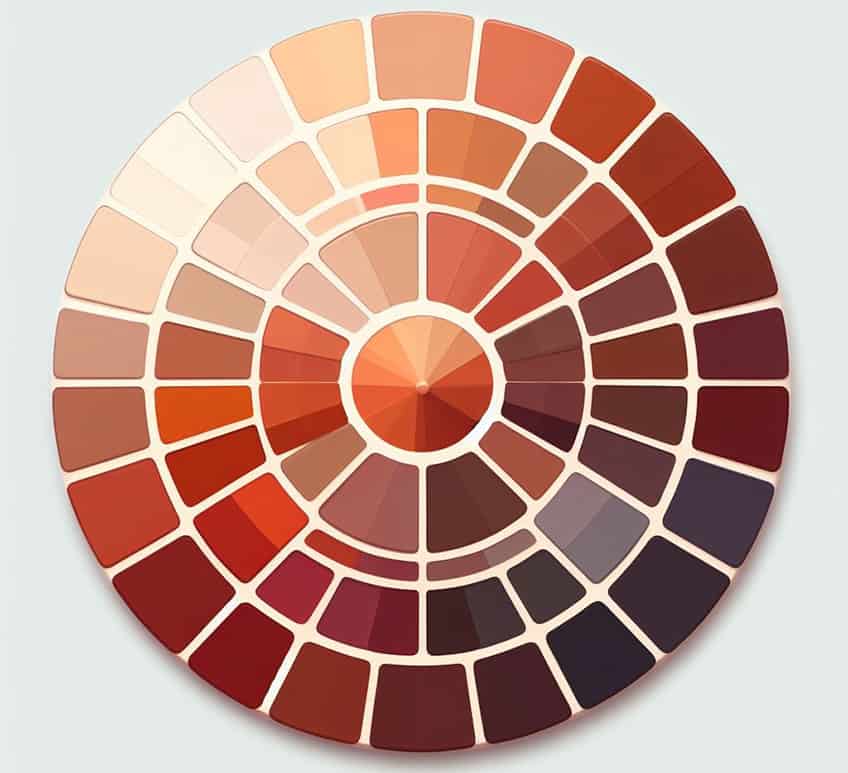
| Shade | Hex Code | CMYK Color Code (%) | RGB Color Code | Color |
| Rust | #b7410e | 0, 64, 92, 28 | 183, 65, 14 | |
| Burnt Orange | #cc5500 | 0, 58, 100, 20 | 204, 85, 0 | |
| Terracotta | #e2725b | 0, 50, 60, 11 | 226, 114, 91 | |
| Copper | #b87333 | 0, 38, 72, 28 | 184, 115, 51 | |
| Autumn Leaf | #a55742 | 0, 47, 60, 35 | 165, 87, 66 | |
| Burnt Sienna | #ea7e5d | 0, 46, 60, 8 | 234, 126, 93 | |
| Rust Red | #aa2704 | 0, 77, 98, 33 | 170, 39, 4 |
What Colors Go With Rust?
The warm orange-brown rust color can be quite versatile as it can also be used like you would a neutral color. This means you can pair it with almost any other color, as long as you create a balance between the colors, sometimes having to use them more sparingly.
Neutrals like white, black, gray, and brown will all naturally work well with the rust color. Other close neutrals like beige and tan are also great choices. To see what other color combinations work best, let us look at what color theory has to offer.
Colors That Complement the Rust Color
Colors on the color wheel are all positioned in a specific way, which helps determine how each color works with others. Complementary colors will always be contrasting and are found on adjacent ends of the color wheel. Since the rust color we have chosen is a shade of orange, its complementary hue can be various shades of blue.
You can go for a bold blue and create a more subtle contrast with a light blue or use a darker navy blue to produce a more sophisticated look.

| Shade | Hex Code | CMYK Color Code (%) | RGB Color Code | Color |
| Rust | #b7410e | 0, 64, 92, 28 | 183, 65, 14 | |
| Blue | #0e84b7 | 92, 28, 0, 28 | 14, 132, 183 | |
| Navy | #000080 | 0, 0, 50.2 | 0, 0, 128 | |
| Light Blue | #5cc5f3 | 62, 19, 0, 5 | 92, 197, 243 |
Other colors that also provide contrast are known as split complementary colors. These are easy to find and are neighbors to your complementary color. This would include shades of blue and blue-green, for example, turquoise or teal.

| Shade | Hex Code | CMYK Color Code (%) | RGB Color Code | Color |
| Rust | #b7410e | 0, 64, 92, 28 | 183, 65, 14 | |
| Teal | #008080 | 100, 0, 0, 50 | 0, 128, 128 | |
| Turquoise | #30d5c8 | 77, 0, 6, 16 | 48, 213, 200 |
Analogous Rust Colors
Any color that looks similar or has related characteristics can be labeled analogous. On the color wheel, these colors are all found near one another. So, analogous colors for rust will be shades of red and yellow. Consider burgundy and mustard yellow.
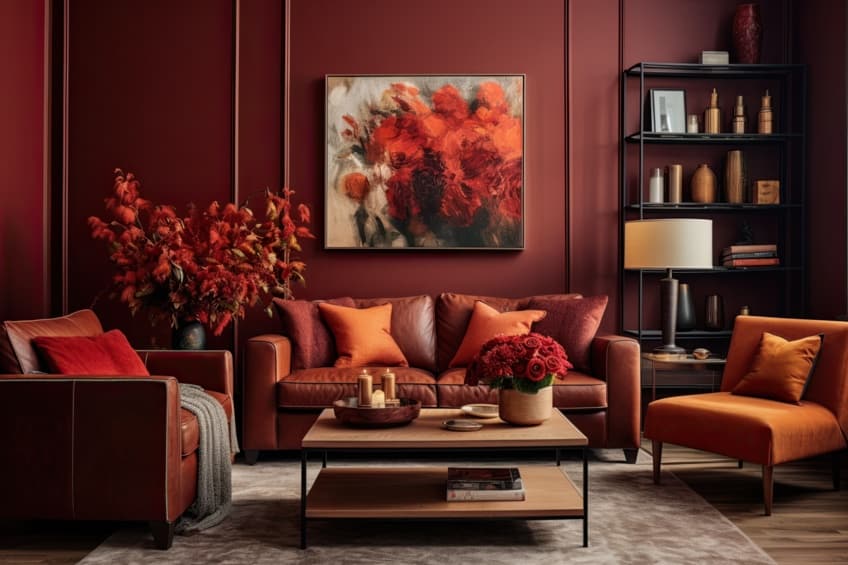
| Shade | Hex Code | CMYK Color Code (%) | RGB Color Code | Color |
| Rust | #b7410e | 0, 64, 92, 28 | 183, 65, 14 | |
| Burgundy | #800020 | 0, 100, 75, 50 | 128, 0, 32 | |
| Mustard Yellow | #b7960e | 0, 18, 92, 28 | 183, 150, 14 |
Another color to consider is a lighter shade of red. Pink pairs perfectly with rust to create a sophisticated and appealing combination. Take millennial pink, a soft and rosy pale pink, and when paired with rust, will produce a luxurious and complex color palette that is visually pleasing and inviting.
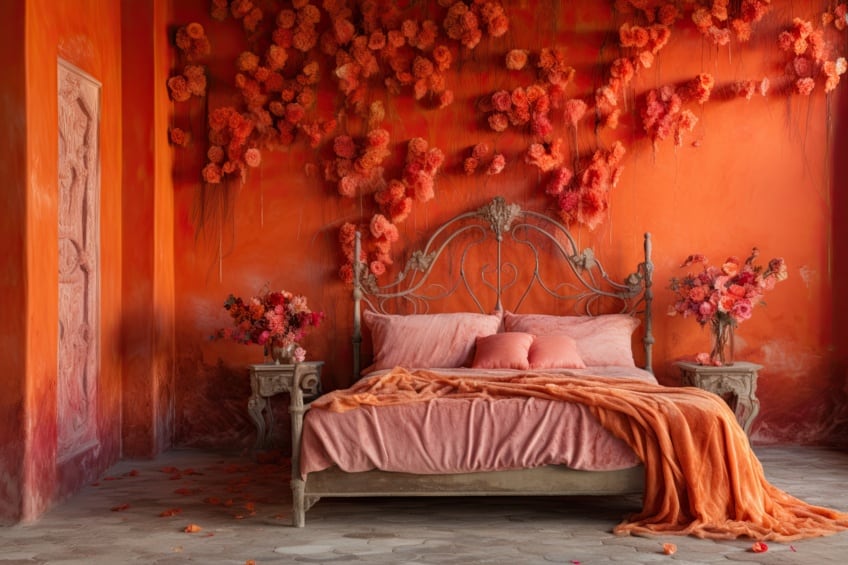
| Shade | Hex Code | CMYK Color Code (%) | RGB Color Code | Color |
| Rust | #b7410e | 0, 64, 92, 28 | 183, 65, 14 | |
| Pink | #f3cfc6 | 0, 15, 19, 5 | 243, 207, 198 |
Monochromatic Rust Colors
A color combination that uses variations of a single color, such as rust, is known as a monochromatic color scheme. A very easy color combination, where you do not have to be bothered about the colors clashing. The range of colors in this combination usually includes different dark to light rust colors.

| Shade | Hex Code | CMYK Color Code (%) | RGB Color Code | Color |
| Rust | #b7410e | 0, 64, 92, 28 | 183, 65, 14 | |
| Dark Rust | #4a1a06 | 0, 65, 92, 71 | 74, 26, 6 | |
| Light Rust | #f4966e | 0, 39, 55, 4 | 244, 150, 110 |
Triadic Rust Colors
This color combination should be used carefully as the colors can easily clash. To avoid this, select your base color and use the additional colors as accents. As the name indicates, the three colors create an even-sided triangle when viewed on the color wheel. The colors include strong violet and green.
However, you can also choose different shades and tones of these colors, for example, a soft mauve or sage green.
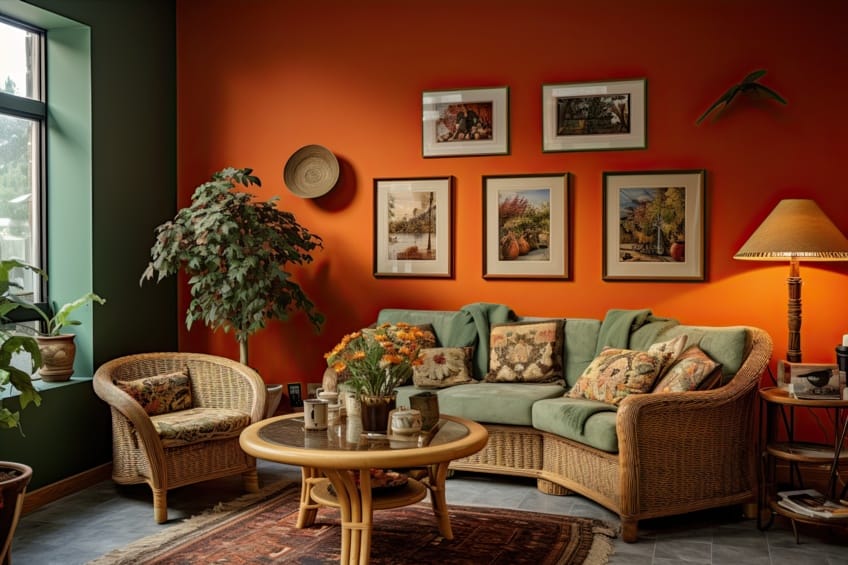
| Shade | Hex Code | CMYK Color Code (%) | RGB Color Code | Color |
| Rust | #b7410e | 0, 64, 92, 28 | 183, 65, 14 | |
| Mauve | #e0b0ff | 12, 31, 0, 0 | 224, 176, 255 | |
| Sage Green | #b2ac88 | 0, 3, 24, 30 | 178, 172, 136 |
How to Mix Rust Color Acrylic Paint
Rust is a strong shade of orange that has a brown tone. When mixing colors, it is always fun to experiment, because in many cases, some blends might come out in unexpected ways. There are a few ways you can try mixing a rust color, beginning with a blend of orange, red, and a dash of brown. You will need to play around with the proportions until you reach the desired colors. You can also leave the red out if you are looking for a more orange-brown-based rust color.
You can try blending a strong orange with violet, which should produce something close to the rust color.
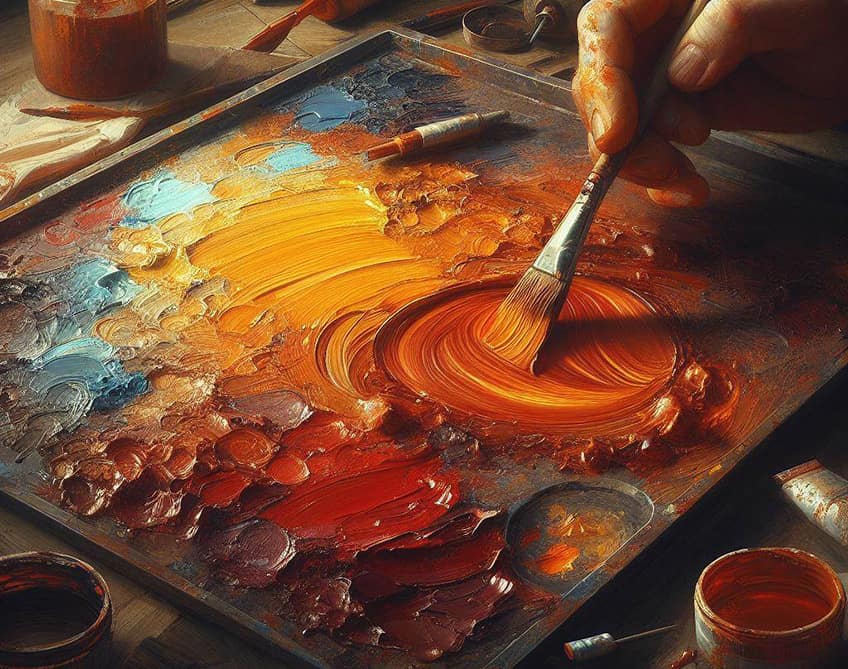
Another option is to blend burnt sienna and raw sienna, or raw umber and orange. You can also experiment with a combination of these to see what color you can produce. Once you have your rust color, you can also darken it by adding a dash of black or dark brown. To create a light rust color, simply include some white.
Creating a Rust Color Palette in the Home
The rust color has seen an increase in popularity over the years, as it is a versatile earthy color that can easily be used as a neutral. The color also works with different styles from a rustic look to more refined and sophisticated styles. The rust color is the perfect autumn color that can easily provide that warm and cozy feel to any space.
The welcoming, pleasant, and earthy color can be used most successfully in bedrooms and other small spaces.
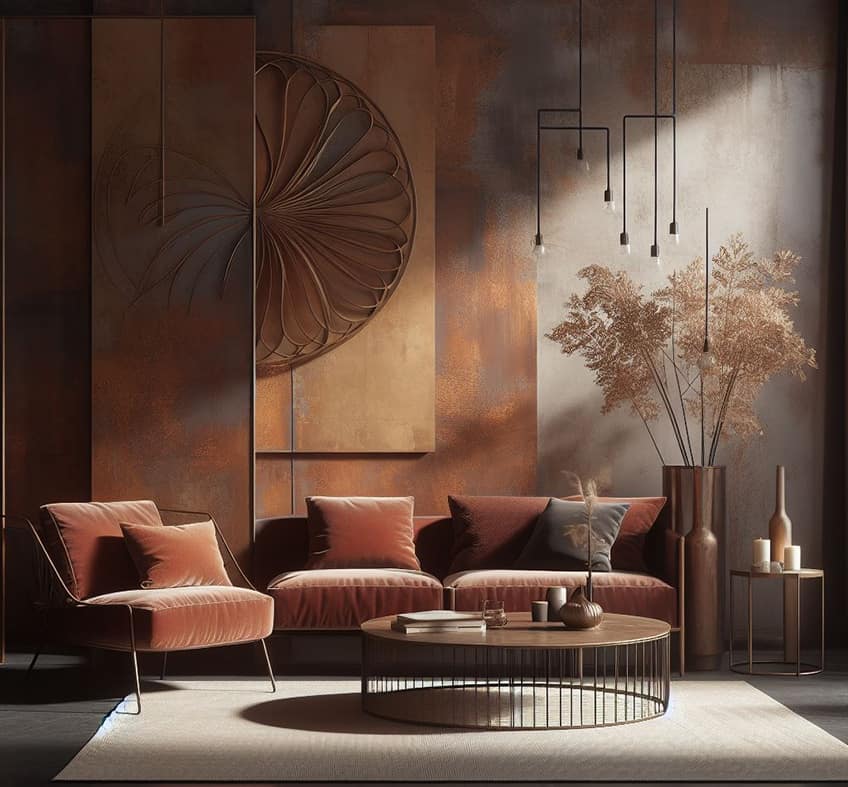
However, it can also work wonderfully in kitchens, living areas, and dining areas. There are many options when it comes to choosing paint wall colors, however, the color can also be used in other ways. Consider using wallpaper, tiles, cushions, rugs, vases, paintings, candles, lampshades, throws, and other textiles.
Decorating With the Rust Color
If you are only looking to add a touch of rust to your home, consider using it as an accent color. This is where you can bring in rust-colored rugs, cushions, and throws. Adding these to an otherwise neutral space can bring in a little color and warmth.
Rust Color Walls
Rust can also be used as a wall paint color, and there are many shades to choose from. Consider a darker more rustic shade that will contrast nicely with white or beige colors or choose a light rust color that can provide a neutral background to work with. In place of painting all the walls, why not try a feature or accent wall?
This can help to bring more character and interest, creating a focal point that can help set the scene for the rest of the room design.

You can use a rust color palette to pair with neutral furnishings, to create a harmonious and welcoming look. The rust color can also be used as a background for more vibrant accent colors. Whatever style you are going for, including rust-colored walls can only help to elevate the overall look.
Rust Color Furniture
Besides painting the walls, you can include rich earthy rust tones in different furniture options. Again, there are various shades of rust that you can choose, depending on what you are looking for. There are also different textures or types of upholstery, for example, you can decide on a leather couch, or you can go for a more luxurious velvet covering in a rust color.
There are also different furniture options, such as couches, armchairs, or ottomans.
Rust Colors in Different Rooms
You can apply the above ideas to living areas, but what rooms like the kitchen or bedroom? In the bedroom, you can start by simply bringing in rust-colored bedding and cushions that will contrast beautifully with a white background.
The color can help to add warmth and provide a welcoming ambiance. You can also go for an accent wall that can help ground the rest of the color scheme, providing a sense of calm and coziness.
In the kitchen, you can also bring the rich and warm rust tones by introducing accents through kitchen appliances, towels, and dishware. This provides a subtle hint of warmth without overdoing it.

You can go further by adding rust-colored cabinetry, backsplash, or shelving. Consider including copper metallic finishes, which should provide a more sophisticated appeal. A rust color palette can also work in the bathroom, which can help to create a warm and welcoming space.
Combine with white and other neutrals to balance the look. Again, you can paint the walls or go for a more subtle approach by using the rust color as an accent.
Including a shade of rust in a design will help to provide warmth and richness and will add an enchanting dimension to a color scheme. The rust color is a beautiful and earthy hue that is versatile and easy to incorporate, infusing character and a touch of warmth into any interior design.
Frequently Asked Questions
Is the Rust Color a Shade of Red or Brown?
The rust color can have many rust color names and can be described as orange-brown, reddish-brown, or even yellowish-brown. If you look at the rust on metal, you will probably see a little of all these colors. However, the graphic color known as rust can be defined as a shade of orange or orange-brown.
What Colors Go With Rust?
Since rust is often used as a neutral color, it will work best with other neutrals like white, black, gray, beige, and brown. To create contrast with the rust color, consider adding shades of blue and green. Combining the rust color with shades of red and yellow also works well.
Does the Rust Color Go With Beige?
Beige is considered a warm neutral color and can also be described as a pale shade of brown. This makes it a perfect match to the rust color. The brown undertone helps to enhance the warm look when paired with rust, creating a layered and monochromatic look.
In 2005, Charlene completed her Wellness Diplomas in Therapeutic Aromatherapy and Reflexology from the International School of Reflexology and Meridian Therapy. She worked for a company offering corporate wellness programs for a couple of years, before opening up her own therapy practice. It was in 2015 that a friend, who was a digital marketer, asked her to join her company as a content creator, and this is where she found her excitement for writing.
Since joining the content writing world, she has gained a lot of experience over the years writing on a diverse selection of topics, from beauty, health, wellness, travel, and more. Due to various circumstances, she had to close her therapy practice and is now a full-time freelance writer. Being a creative person, she could not pass up the opportunity to contribute to the Art in Context team, where is was in her element, writing about a variety of art and craft topics. Contributing articles for over three years now, her knowledge in this area has grown, and she has gotten to explore her creativity and improve her research and writing skills.
Charlene Lewis has been working for artincontext.org since the relaunch in 2020. She is an experienced writer and mainly focuses on the topics of color theory, painting and drawing.
Learn more about Charlene Lewis and the Art in Context Team.
Cite this Article
Charlene, Lewis, “Rust Color – The Earthy Palette Used for Interior Decor.” Art in Context. November 29, 2023. URL: https://artincontext.org/rust-color/
Lewis, C. (2023, 29 November). Rust Color – The Earthy Palette Used for Interior Decor. Art in Context. https://artincontext.org/rust-color/
Lewis, Charlene. “Rust Color – The Earthy Palette Used for Interior Decor.” Art in Context, November 29, 2023. https://artincontext.org/rust-color/.


